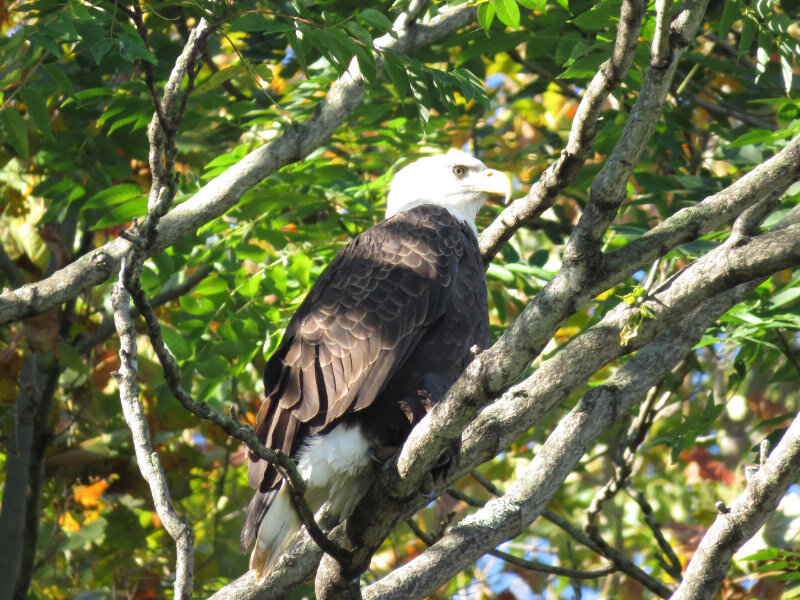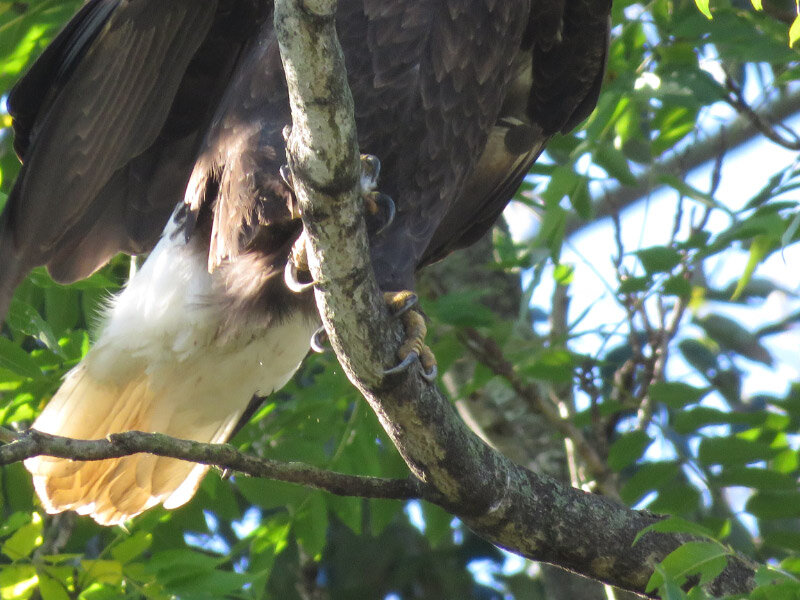Conowingo in October – part 1
/A couple of weeks ago we headed up to Conowingo Dam. This time of year the local Bald Eagle population is supplemented by birds coming from further north to enjoy the bounty of fish at the base of the dam through the winter. It was a clear and cool morning with the moon still visible near the treetops.
The water was much lower than earlier this year when the water was very high and fishermen/birds were elsewhere.
Fall was in full swing. The drought had reduced the color but there were still burst of color and seeds to notice while we were looking for eagles.
My best eagle pictures of the day were of one that flew into a tree on the slope above us (i.e. we were between the bird and the river. I zoomed in for a picture of the head and the talons. The bird flew back toward the river a few second after the talon shot.
There are always a lot of Black Vultures at Conowingo and this time was no exception. They like the vantage point of some of the high structures on the dam and the abutment down closer to the water. Vultures are the bird version of a ‘cleanup crew.’ Based on the number of black vultures always around Conowingo, there must be a lot of carcasses (fish?) around there. This time we didn’t see any congregate near the parking lot gate….they were all out on structures or rocks…in the morning sun.
Now for some challenge pictures. How many eagles do you see in the pictures below? Remember that juvenile eagles do not have white heads or tails. They are clearly different than the black vultures in the pictures.
There are 3 juvenile and 1 mature Bald Eagles. What about the next picture?
In this one there is only one juvenile Bald Eagle, but I took the picture to show how distinctive the wing tips of the Black Vulture are. They often spread their wings like this --- very dramatic black and white bird. In flight the white tips are also visible and make them easy to identify when they soar overhead.
Tomorrow I’ll post about the other birds we saw at Conowingo.

































